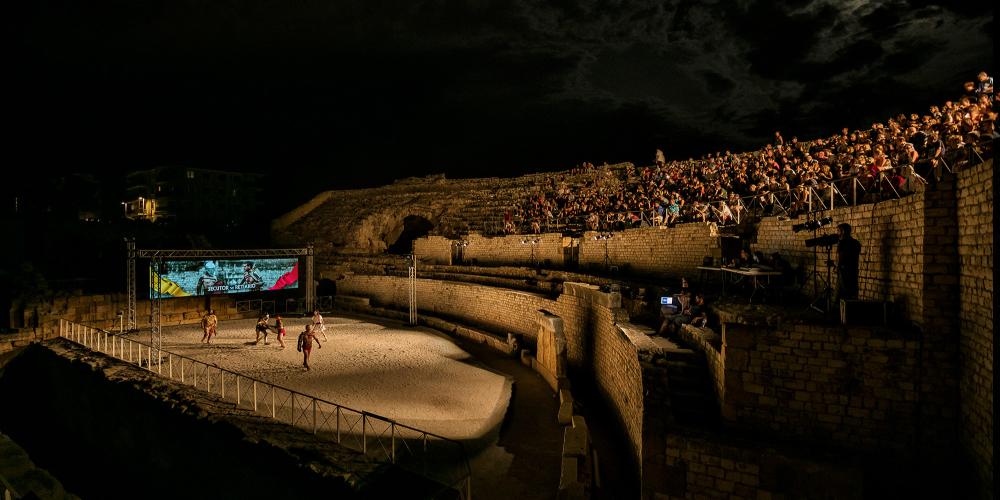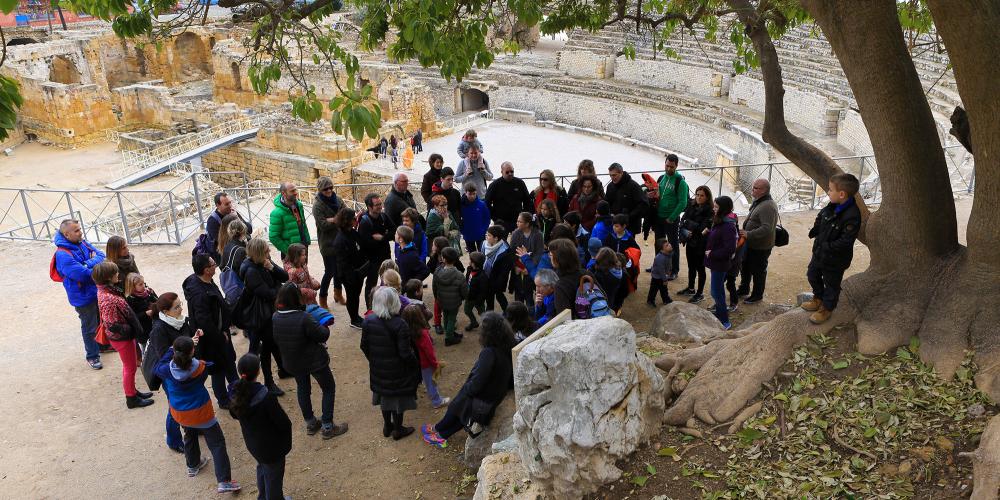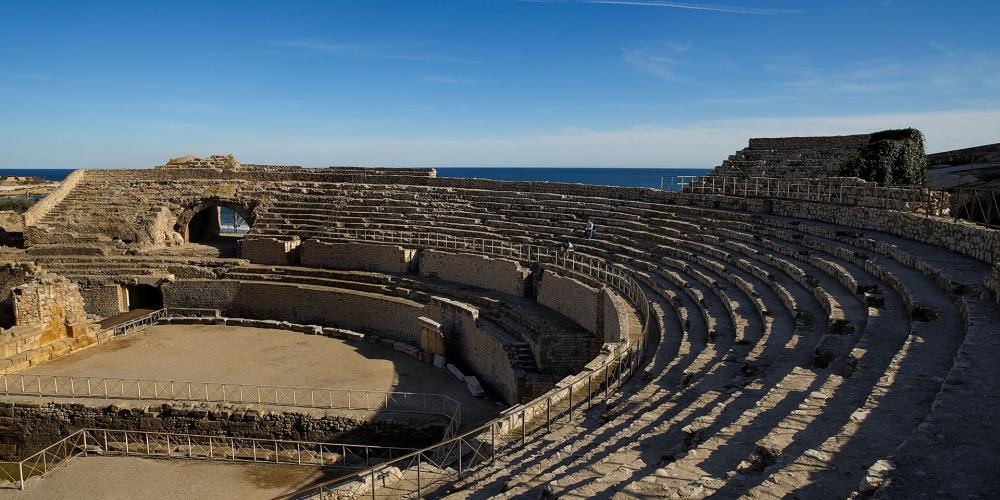Roman Amphitheatre

This oval structure built in the 2nd century and overlooking the sea is more than just an ancient stadium with its stands carved directly out of the underlying bedrock. The amphitheatre—109.5 metres long by 86.5 metres wide—could hold up to 14,000 spectators and was the site of many aspects of existence: drama, entertainment, and judgement.
In its day, it was the scene of fights between gladiators. There were battles against wild beasts. There were also public executions here. In the year 259 A.D., the Bishop Fructuoso and his deacons Augurio and Eulogio were burned alive within its confines. In the early 6th century, a Visigoth basilica was built on the site, which was eventually replaced by the mediaeval Santa Maria del Miracle (Our Lady of the Miracle) church.




